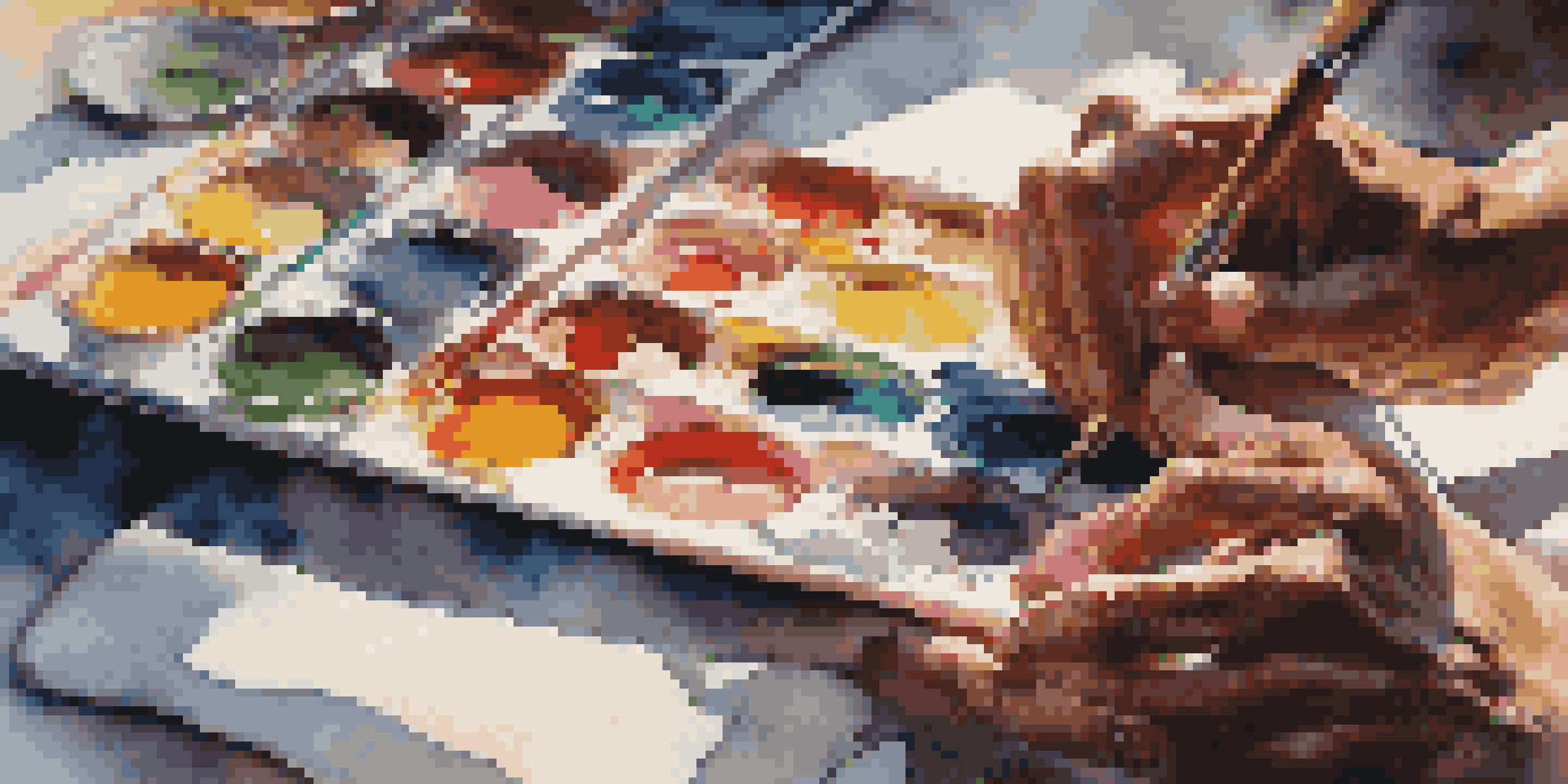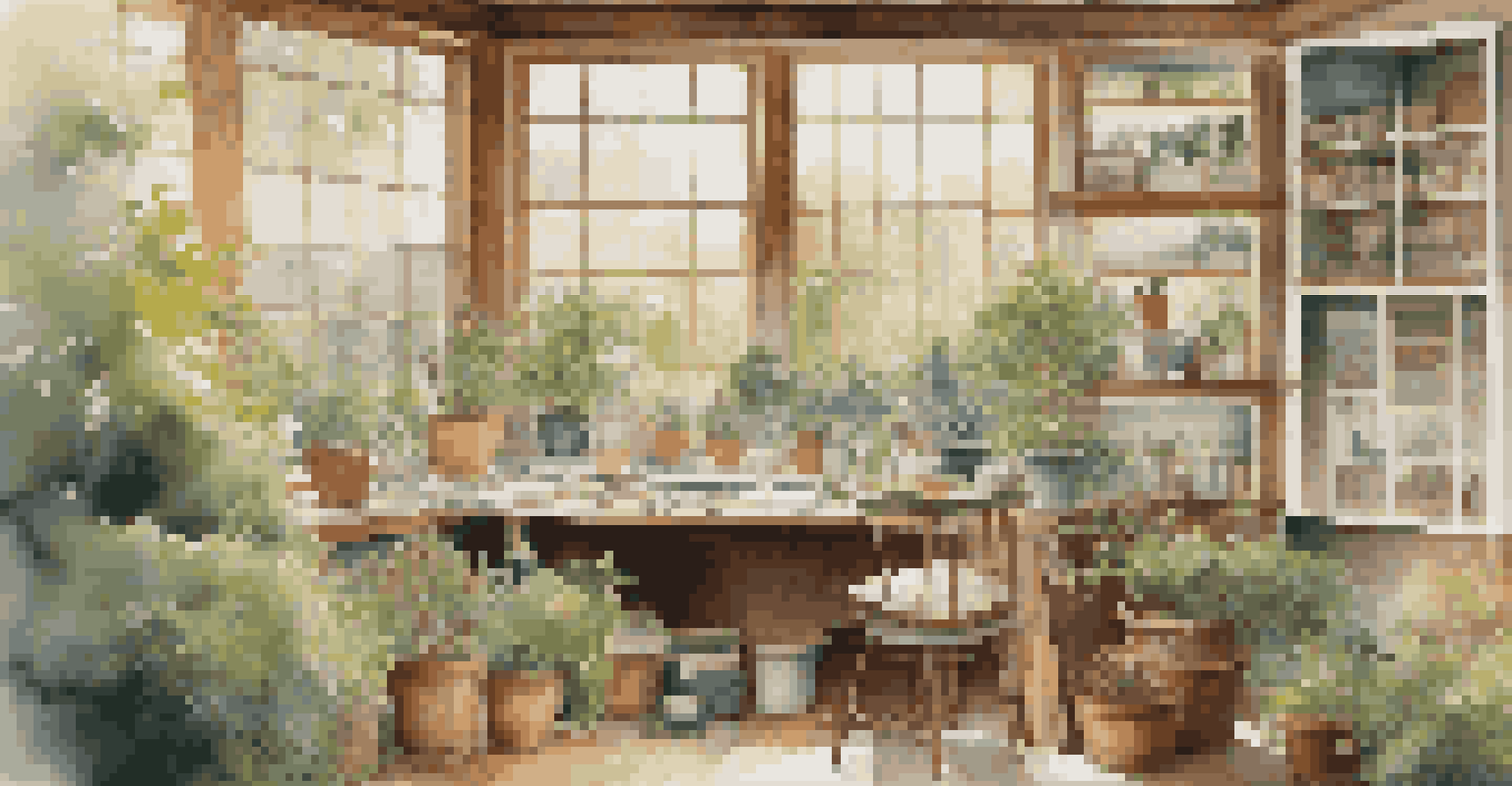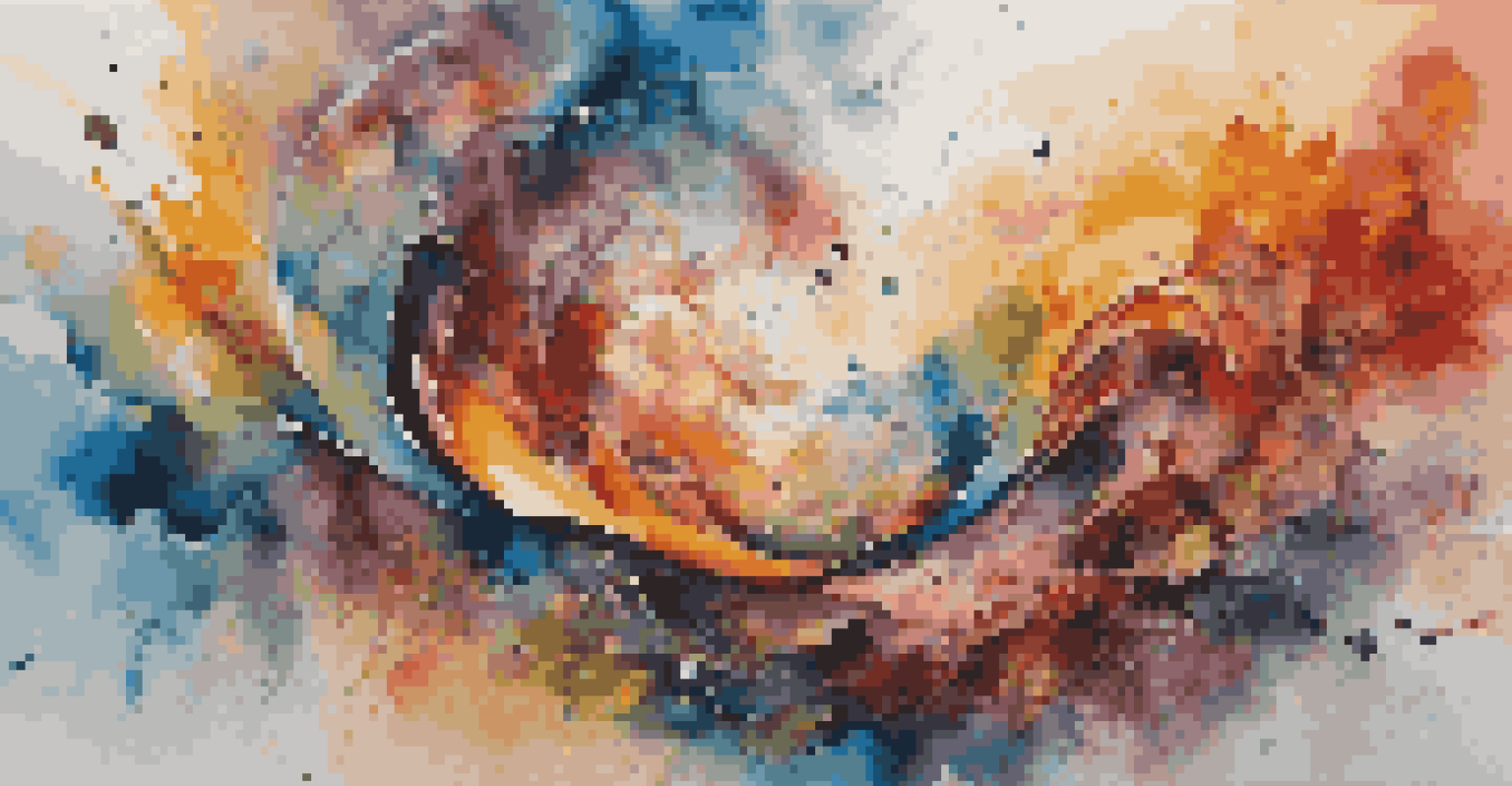The Concept of Originality in Art: A Critical Examination

Defining Originality: What Does It Mean in Art?
Originality in art is often thought of as the creation of something entirely new. However, this definition can be misleading because most artworks are influenced by previous styles, movements, and techniques. Rather than a simple act of creation, originality involves a unique interpretation or expression of existing ideas. It's like cooking; you might use a classic recipe but add your own twist to make it special.
Originality is nothing but judicious imitation. The most original writers are those who steal from others.
Artistic originality can also be viewed through the lens of personal experience and perspective. Every artist brings their own background, emotions, and thoughts to their work, which can lead to an original outcome even if the subject matter has been explored before. This personal touch is what makes art resonate with audiences – it’s the artist’s voice that transforms a familiar concept into something fresh.
Moreover, the question of originality often intersects with cultural and societal influences. Art does not exist in a vacuum; it reflects and responds to the world around it. Therefore, when examining originality, we must consider how artists navigate their cultural contexts while striving to maintain their individuality.
The Role of Influence in Artistic Originality
Influence is a double-edged sword in the realm of art. While many artists aim for originality, they are often inspired by other works, artists, or movements. This inspiration can lead to a beautiful blend of ideas, but it also raises questions about how much influence is acceptable before a piece loses its originality. Think of it like a musical artist sampling a classic track – they create something new while paying homage to the original.

Additionally, the fine line between influence and imitation can be subjective. What one person sees as a tribute, another might view as plagiarism. This discrepancy complicates the conversation around artistic originality. For instance, a painter who draws on the style of Van Gogh may be celebrated for their originality, while another who replicates Van Gogh’s work may be criticized for lacking creativity.
Originality is Unique Expression
Originality in art is not about creating something entirely new, but about offering a unique interpretation of existing ideas.
Ultimately, influence is an inherent part of the artistic process. Artists often build upon the ideas and techniques of those who came before them, creating a rich tapestry of interconnected works that reflect evolving concepts of originality. Recognizing this can help us appreciate art’s development rather than solely focusing on the idea of originality as a solitary achievement.
Cultural Context and Originality in Art
Cultural context plays a critical role in shaping what originality means for artists around the world. Different cultures have unique histories, traditions, and values that influence artistic expression. For example, indigenous artists may draw on their heritage and traditions to produce work that speaks to their identity, which can be perceived as original in a way that aligns with their cultural narrative.
Art is the most beautiful of all lies; it is a reflection of the artist’s unique vision, yet it builds upon the foundations laid by those who came before.
Moreover, the global art market often celebrates certain styles or movements, which can create pressure for artists to conform to these trends. This can lead to a tension between staying true to one’s cultural roots and achieving recognition in a broader context. For instance, an artist from a marginalized community might struggle with how to express their originality while still appealing to mainstream audiences.
This intersection of culture and originality invites us to rethink how we evaluate art. Are we appreciating the original works for their technical prowess, or are we also valuing the stories and backgrounds that inform them? Understanding this relationship encourages a more inclusive approach to art appreciation, recognizing that originality can be multifaceted and culturally specific.
The Impact of Technology on Artistic Originality
In today’s digital age, technology has transformed the way art is created and consumed, raising new questions about originality. Tools like digital painting software, 3D modeling, and artificial intelligence allow artists to explore uncharted territories in their work. However, this accessibility can lead to concerns about the dilution of originality, as anyone can replicate or modify existing works with relative ease.
On the flip side, technology can also enhance originality by providing artists with new mediums and methods to express their ideas. For example, interactive installations and virtual reality experiences push the boundaries of traditional art forms, allowing for innovative storytelling that captivates audiences. This evolution reminds us that originality is not static; it adapts as new technologies emerge.
Cultural Context Shapes Originality
Cultural influences significantly affect perceptions of originality, as artists often draw on their heritage while navigating contemporary trends.
As we navigate this new landscape, it’s crucial to foster a dialogue about the relationship between technology and originality. How can artists leverage technology to enhance their unique voices while maintaining authenticity? Encouraging thoughtful exploration of this question can lead to a richer understanding of what originality means in the modern art world.
Debates Surrounding Plagiarism and Originality
The discussion around originality is often clouded by debates about plagiarism in art. Plagiarism, in simple terms, is the act of copying someone else’s work without giving credit. However, determining what constitutes plagiarism versus inspiration can be a gray area, leading to significant controversy. Artists must navigate this landscape carefully, as accusations of plagiarism can tarnish reputations and careers.
For instance, famous lawsuits in the music industry highlight the complexities of originality. When one artist claims another has copied their work, it raises questions about how much of a piece can be inspired by existing art before it crosses the line into plagiarism. This tension is mirrored in visual arts, where similar motifs or styles can spark debates over originality.
Ultimately, open discussions about plagiarism and originality can help artists find a balanced approach. By recognizing the influence of past works while also valuing their unique contributions, artists can navigate these challenges constructively. This balance not only fosters creativity but also promotes a culture of respect and acknowledgment within the artistic community.
The Subjectivity of Originality in Art Critique
When it comes to evaluating art, originality is often subjective and varies from one viewer to another. What one person sees as a groundbreaking piece, another may dismiss as derivative. This subjectivity can complicate how originality is discussed in art critiques and reviews, making it essential for critics to articulate their perspectives thoughtfully.
Art critics often rely on a variety of criteria to assess originality, including technique, concept, and emotional impact. However, these criteria can differ widely depending on cultural backgrounds and personal experiences. A piece that resonates deeply with one individual might not have the same effect on another, showcasing the diverse interpretations of originality in art.
Technology Redefines Artistic Boundaries
Advancements in technology are transforming artistic creation and exploration, prompting new conversations about what originality means in the modern context.
This subjectivity highlights the importance of encouraging open dialogue about art. By fostering discussions that consider multiple viewpoints, we can enrich our understanding of originality and appreciate the diverse ways it manifests in various works. Ultimately, recognizing the subjectivity of originality allows us to embrace a broader spectrum of artistic expression.
The Future of Originality in Art: What Lies Ahead?
As we look to the future of art, the concept of originality will likely continue to evolve. With advancements in technology and changing cultural landscapes, artists may redefine what it means to be original. For instance, we may see a rise in collaborative projects that blend various styles and influences, challenging traditional notions of individual originality.
Furthermore, the growing focus on inclusivity and representation in the art world suggests that diverse voices will play a vital role in shaping future artistic originality. Artists from various backgrounds will bring their unique perspectives to the forefront, enriching the art landscape with fresh ideas and narratives. This evolution promises to redefine how we understand originality in a more global context.

Ultimately, the future of originality in art is an exciting prospect that invites exploration. By embracing innovation, collaboration, and diversity, the art world can continue to thrive and inspire future generations of artists. As we support these developments, we can contribute to a richer, more inclusive understanding of what originality truly means in art.